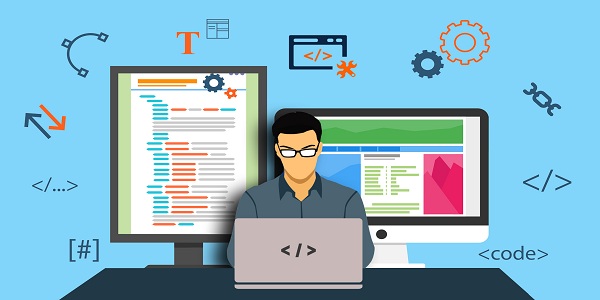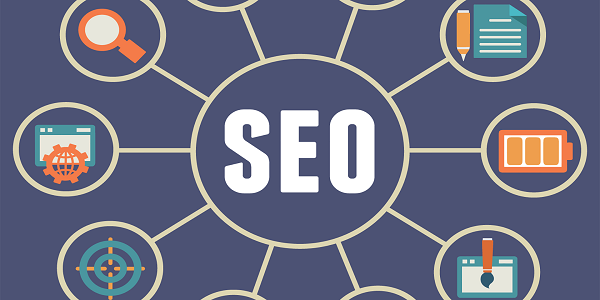" ANCOAX TECHNOLOGIES - MOST TRUSTABLE AND DEDICATED WEB DESIGN COMPANY IN RAIPUR, ROURKELA , AMBIKAPUR, INDIA "

ANCOAX TECHNOLOGIES is a web development company with over a decade of experience in building web applications. Our dedicated web app developers have successfully completed over 300 projects for a variety of industries and business domains, including e-Commerce, e-Learning, Analytics, Finance, Education and more.
With your company vision and goals in mind, we will build the most comprehensive website for you. From backend development to front end design and usability, we have no limits in size or application. When completed, your website will have also gone through rigorous quality assurance testing so you hit the ground running.
We focus on providing a thorough solution and long term partnerships with all of our clients. We propose complete transparency of activities and deliverables, including streamlined project management.
These days, your audience's first impression of your business is based almost exclusively on your website ... so redesigning your website isn’t a task to take lightly. It requires a good deal of thought, time, and potentially money, but the upside can be enormous.
It’s important to note here that "redesign" doesn’t necessarily mean you need to change every single one of your branding and graphic design elements. In fact, redesigns can just entail making functional modifications that help your website work better and assist you in reaching your marketing goals. After all, your website is one of the foundational elements of your marketing strategy.
Marketing and communication design on a website may identify what works for its target market. This can be an age group or particular strand of culture; thus the designer may understand the trends of its audience. Designers may also understand the type of website they are designing, meaning, for example, that (B2B) business-to-business website design considerations might differ greatly from a consumer targeted website such as a retail or entertainment website. Careful consideration might be made to ensure that the aesthetics or overall design of a site do not clash with the clarity and accuracy of the content or the ease of web navigation, especially on a B2B website. Designers may also consider the reputation of the owner or business the site is representing to make sure they are portrayed favourably.
User understanding of the content of a website often depends on user understanding of how the website works. This is part of the user experience design. User experience is related to layout, clear instructions and labeling on a website. How well a user understands how they can interact on a site may also depend on the interactive design of the site. If a user perceives the usefulness of the website, they are more likely to continue using it. Users who are skilled and well versed with website use may find a more distinctive, yet less intuitive or less user-friendly website interface useful nonetheless. However, users with less experience are less likely to see the advantages or usefulness of a less intuitive website interface. This drives the trend for a more universal user experience and ease of access to accommodate as many users as possible regardless of user skill. Much of the user experience design and interactive design are considered in the user interface design.
Advanced interactive functions may require plug-ins if not advanced coding language skills. Choosing whether or not to use interactivity that requires plug-ins is a critical decision in user experience design. If the plug-in doesn't come pre-installed with most browsers, there's a risk that the user will have neither the know how or the patience to install a plug-in just to access the content. If the function requires advanced coding language skills, it may be too costly in either time or money to code compared to the amount of enhancement the function will add to the user experience. There's also a risk that advanced interactivity may be incompatible with older browsers or hardware configurations. Publishing a function that doesn't work reliably is potentially worse for the user experience than making no attempt. It depends on the target audience if it's likely to be needed or worth any risks.
Part of the user interface design is affected by the quality of the page layout. For example, a designer may consider whether the site's page layout should remain consistent on different pages when designing the layout. Page pixel width may also be considered vital for aligning objects in the layout design. The most popular fixed-width websites generally have the same set width to match the current most popular browser window, at the current most popular screen resolution, on the current most popular monitor size. Most pages are also center-aligned for concerns of aesthetics on larger screens.
Fluid layouts increased in popularity around 2000 as an alternative to HTML-table-based layouts and grid-based design in both page layout design principle and in coding technique, but were very slow to be adopted.[note 1] This was due to considerations of screen reading devices and varying windows sizes which designers have no control over. Accordingly, a design may be broken down into units (sidebars, content blocks, embedded advertising areas, navigation areas) that are sent to the browser and which will be fitted into the display window by the browser, as best it can. As the browser does recognize the details of the reader's screen (window size, font size relative to window etc.) the browser can make user-specific layout adjustments to fluid layouts, but not fixed-width layouts. Although such a display may often change the relative position of major content units, sidebars may be displaced below body text rather than to the side of it. This is a more flexible display than a hard-coded grid-based layout that doesn't fit the device window. In particular, the relative position of content blocks may change while leaving the content within the block unaffected. This also minimizes the user's need to horizontally scroll the page.
Responsive Web Design is a newer approach, based on CSS3, and a deeper level of per-device specification within the page's stylesheet through an enhanced use of the CSS @media rule.
Web designers may choose to limit the variety of website typefaces to only a few which are of a similar style, instead of using a wide range of typefaces or type styles. Most browsers recognize a specific number of safe fonts, which designers mainly use in order to avoid complications. Font downloading was later included in the CSS3 fonts module and has since been implemented in Safari 3.1, Opera 10 and Mozilla Firefox 3.5. This has subsequently increased interest in web typography, as well as the usage of font downloading. Most site layouts incorporate negative space to break the text up into paragraphs and also avoid center-aligned text.
Dynamic websites are generated on the fly and use server-side technology to generate webpages. They typically extract their content from one or more back-end databases: some are database queries across a relational database to query a catalogue or to summarise numeric information, others may use a document database such as MongoDB or NoSQL to store larger units of content, such as blog posts or wiki articles.
In the design process, dynamic pages are often mocked-up or wireframed using static pages. The skillset needed to develop dynamic web pages is much broader than for a static pages, involving server-side and database coding as well as client-side interface design. Even medium-sized dynamic projects are thus almost always a team effort.
When dynamic web pages first developed, they were typically coded directly in languages such as Perl, PHP or ASP. Some of these, notably PHP and ASP, used a 'template' approach where a server-side page resembled the structure of the completed client-side page and data was inserted into places defined by 'tags'. This was a quicker means of development than coding in a purely procedural coding language such as Perl.
Both of these approaches have now been supplanted for many websites by higher-level application-focused tools such as content management systems. These build on top of general purpose coding platforms and assume that a website exists to offer content according to one of several well recognised models, such as a time-sequenced blog, a thematic magazine or news site, a wiki or a user forum. These tools make the implementation of such a site very easy, and a purely organisational and design-based task, without requiring any coding.
Web development is a broad term for the work involved in developing a web site for the Internet (World Wide Web) or an intranet (a private network). Web development can range from developing the simplest static single page of plain text to the most complex web-based internet applications (or just 'web apps') electronic businesses, and social network services. A more comprehensive list of tasks to which web development commonly refers, may include web engineering, web design, web content development, client liaison, client-side/server-side scripting, web server and network security configuration, and e-commerce development. Among web professionals, "web development" usually refers to the main non-design aspects of building web sites: writing markup and coding. Most recently Web development has come to mean the creation of content management systems or CMS. These CMS can be made from scratch, proprietary or open source. In broad terms the CMS acts as middleware between the database and the user through the browser. A principle benefit of a CMS is that it allows non-technical people to make changes to their web site without having technical knowledge.
For larger organizations and businesses, web development teams can consist of hundreds of people (web developers) and follow standard methods like Agile methodologies while developing websites. Smaller organizations may only require a single permanent or contracting developer, or secondary assignment to related job positions such as a graphic designer or information systems technician. Web development may be a collaborative effort between departments rather than the domain of a designated department. There are three kind of web developer specialization: front-end developer, back-end developer, and full-stack developer.

We provide the Creative Web Designing service based on your requirement . We have the team of creative and dedicated designers that will design your dream project with the latest technologies that will be up on the web . We create the responsive and best UI/UX design that build your great impression on the web .
We Programe your project . We have the team of passionated developers that develop your project . We are best in top technologies and languages like PHP, LARAVEL, ASP.NET, SQL that will be used to program your Dream . Our dedicated and passionated Developers are ready to deliver your project based on your requirement .


We are ready to build all kind yor software that meets your business needs. We discuss your needs, design a solution, provide you with hand-selected app developers, develop, test, deploy, and support your application per your requirements and expert best practices .
We promote your Brand on the internet that Increase brand awareness and brand equity of product. We help you to Increase Visibility and web traffic .
Benefits of Digital Marketing


Search engine optimization (SEO) is the process of improving the volume and quality of traffic to a web site from search engines. Usually, the earlier a site is presented in the search results, or the higher it "ranks," the more searchers will visit that site. The leading search engines, Google, Yahoo! and MSN, use crawlers to find pages for their algorithmic search results.
Shop No. 2, Rizvi Complex,
Opposite Millenium Plaza,
Great Eastern Rd, Raipur,
Chhattisgarh 492002
Mob: (+91)-93291-20222
L-3, Civil Twp,
Rourkela,
Odisha 769004
Mob: (+91)-9776447875
Near Old Bus Stand,
Behind Birendra Prabha Hotel,
Babu Para,
Ambikapur(C.G.) - 497001
Mob: (+91)-96696-27065